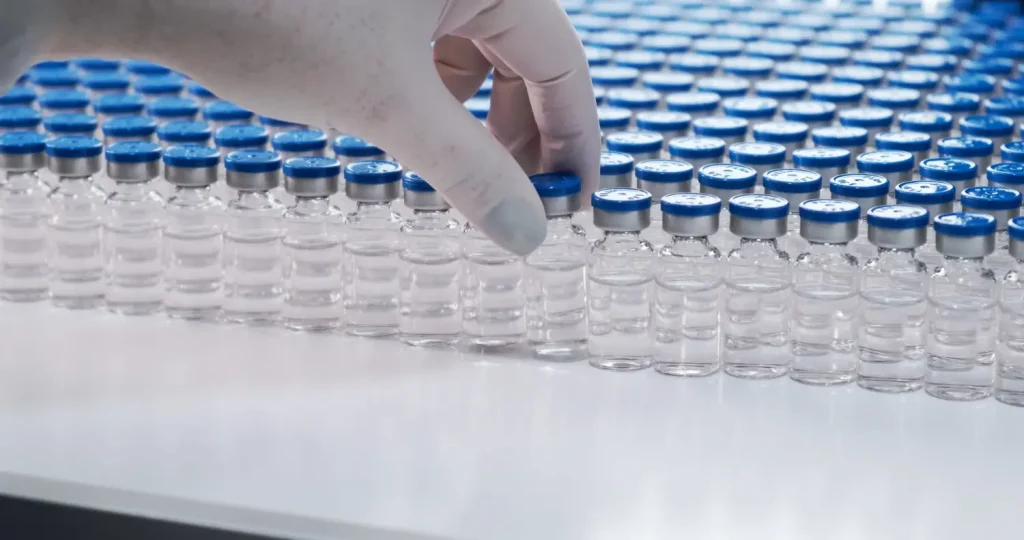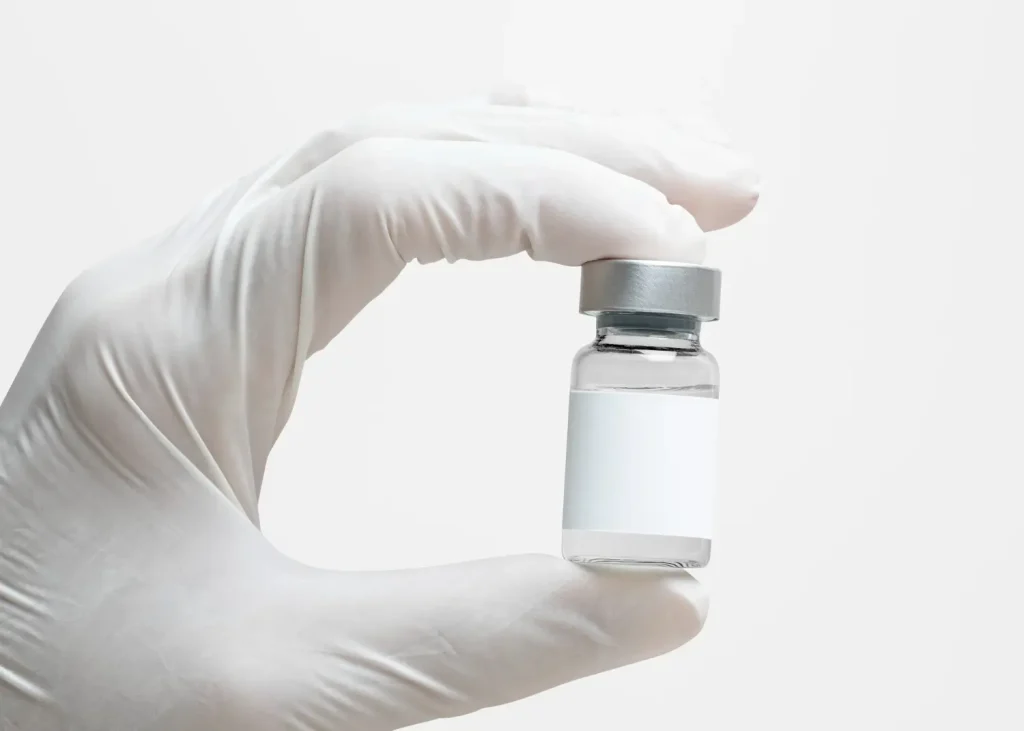Dermal fillers have revolutionized the field of aesthetic medicine, offering a non-surgical solution for enhancing facial features, reducing the signs of aging, and restoring volume. Today, we will look closer at Austrian-made Saypha fillers, renowned for their exceptional quality and effectiveness. With a diverse range of formulations and advanced technology, Saypha fillers provide practitioners with versatile options to meet their patients’ unique needs.
What Is Saypha Filler?
Saypha fillers are a brand of temporary hyaluronic acid (HA) fillers created by one of the leading European manufacturers, Croma-Pharma GmbH, or Croma for short. Saypha fillers were previously known as Princess fillers before being re-branded in 2019. If you have already used, or heard of Princess fillers, you will know what quality to expect.
Thanks to the company’s S.M.A.R.T. technology (Supreme Monophasic and Reticulated Technology), they can deliver highly purified fillers with elevated levels of homogenization, which allows them to stand out compared to other products on the market. With extensively purified non-animal hyaluronic acid, Saypha fillers are well-suited for enhancing lip volume, addressing facial scars, and efficiently smoothing out various types of wrinkles at different depths.
There are several types of Saypha dermal fillers available on the market. They are:
- Saypha Rich
- Saypha Filler
- Saypha Filler Lidocaine
- Saypha Volume
- Saypha Volume Lidocaine
- Saypha Volume Plus Lidocaine
Depending on the type of Saypha filler, the effects can last between six and 12 months, with noticeable results emerging within the first week.
How Saypha Fillers Work
Saypha fillers, like other HA fillers, work by injecting a gel-like substance containing HA into the desired areas of the face or body. When injected, the gel binds to water molecules, attracting and retaining moisture. This results in increased hydration and plumping of the treated area, reducing the appearance of wrinkles, lines, and hollow areas.
The HA fillers are fully biocompatible and biodegradable. The ingredients used in these fillers are naturally found in the human body. This means no traces are left behind when the fillers eventually break down.
One of the key benefits of HA fillers is their ability to be removed if needed. In cases where the fillers settle poorly or require adjustment, hyaluronidase enzyme can be injected into the area. This enzyme breaks down the HA filler, facilitating easier/faster absorption by the patient’s body than through the natural process alone. This offers flexibility and the option for correction or reversal if desired.
Saypha Filler Contraindications
All HA dermal fillers, including Saypha, share similar contraindications. Therefore, healthcare professionals should carefully evaluate the patient’s medical history and look for the following contraindications:
- Hypersensitivity or known allergy to hyaluronic acid or any components of the filler.
- Active skin infections, such as herpes, in the treatment area.
- Autoimmune disorders or a history of autoimmune diseases.
- Pregnancy or breastfeeding.
- Use of blood-thinning medications or a bleeding disorder.
- Presence of permanent implants or prosthetic materials in the treatment area.
- Acute or chronic skin conditions, such as eczema or psoriasis, in the treatment area.
- Recent laser treatment, chemical peel, or other resurfacing procedures in the treatment area.
Saypha Filler Targeted Areas
After considering the contraindications, exploring the patient’s goals and identifying areas where Saypha fillers can be used effectively is important. Some of the main targeted areas where it can be used to achieve the desired results are:
- Lips: Saypha fillers can enhance lip volume and definition, creating a fuller and more symmetrical appearance.
- Nasolabial lines: It can also soften and reduce the appearance of the lines that extend from the sides of the nose to the corners of the mouth, restoring a smoother and more youthful look.
- Forehead: By injecting Saypha dermal fillers into the forehead area, it is possible to minimize the appearance of horizontal lines and creases, resulting in a smoother and more relaxed forehead appearance.
- Around Eyes: Saypha fillers can help diminish the fine lines and wrinkles that appear around the outer corners of the eyes, commonly known as crow’s feet, creating a more youthful and refreshed eye area.
- Glabellar area: Saypha fillers can smooth out the vertical lines between the eyebrows, known as the glabellar lines or frown lines, resulting in a softer and more relaxed appearance.
- Lip corners: Saypha fillers can address down-turned or drooping lip corners, helping to elevate and restore a more uplifted and youthful lip contour.
Benefits and Side Effects of Saypha Fillers
Saypha Fillers offer a range of advantages that can help individuals achieve their desired facial rejuvenation goals. The following are some of the Saypha filler benefits:
- The procedure is quick and almost painless.
- Requires no downtime.
- The filler can be removed easily if required.
- Natural-looking results.
- Lasts between six and 12 months.
- It can be combined with other cosmetic procedures and products.
While Saypha fillers provide effective results, it’s important to be aware of potential side effects that may arise. Here are some of the possible side effects associated with Saypha Fillers:
- Bleeding at the injection site
- Bruising
- Swelling
- Redness
- Rash
- Itching
- Asymmetrical appearance
- Infection
- Lumps or bumps
Saypha Filler Aftercare
To lower the chance of experiencing certain Saypha filler side effects and ensure optimal results, the patient should avoid the following:
- Alcohol and smoking for at least 24 hours, but for optimal results, it would be best to avoid them for a week.
- Sun tanning, both natural and artificial, and saunas for 24 hours.
- Sleeping on the treated area for 48 hours.
- Applying oil-based and active cosmetic products to the treated area for 24 hours.
- Additional cosmetic treatments for at least two weeks.
- The patient should apply a cold compress to the treated area at regular intervals in the first 24 hours, ensuring that ice does not come into direct contact with the skin.
Within a month, the patient should have a follow-up procedure, so the doctor can assess the results and do any additional touch-up procedures as needed, or even suggest other products like Sculptra.
Conclusion
Saypha fillers are well-known for a range of benefits and applications in aesthetic medicine, and the Saypha filler side effects are nothing unheard of, in comparison to that of similar dermal fillers. As a whole, dermal fillers all have relatively standard, minimal side effects. The degree of homogenization present in their constituent parts and some ingredients is the only significant distinction between the presently available HA fillers.
With their advanced technology and diverse formulations, Croma-Pharma can provide healthcare professionals with versatile options to meet their patients’ unique needs. From facial rejuvenation to addressing specific areas like lips, nasolabial lines, and the forehead, Saypha fillers can help achieve desired results.
It’s essential for healthcare professionals to carefully weigh the benefits, contraindications, and potential side effects while taking into account the specific circumstances, characteristics, and needs of each case or patient to ensure safe and satisfactory outcomes.
FAQ
Is Saypha a good filler?
Yes, Saypha fillers are generally considered a good option for facial rejuvenation treatments.
What are the ingredients in Saypha?
Saypha fillers may contain a combination of ingredients, including hyaluronic acid, glycerol, and lidocaine, among others. It’s important to note that the specific formulation of Saypha fillers can vary.
Is Saypha filler FDA-approved?
The Saypha filler is not yet approved by the FDA, though all the ingredients used in the filler are FDA-approved. The clinical trials are still ongoing.
References:
- Safety And Efficacy Of Princess® FILLER Lidocaine In The Correction Of Nasolabial Folds; Doris Grablowitz, Monika Sulovsky, Sonja Höller, Zrinka Ivezic-Schoenfeld, Souyet Chang-Rodriguez, and Martin Prinz; Nov 2019
- Fillers: Contraindications, Side Effects and Precautions; Philippe Lafaille and Anthony Benedetto; Apr 2010
- Treatment of facial lipoatrophy, morphological asymmetry, or debilitating scars with the hyaluronic acid dermal filler Princess® FILLER; Daisy Kopera, Zrinka Ivezic-Schoenfeld, Ira G Federspiel, Doris Grablowitz, Benjamin Gehl, and Martin Prinz; Nov 2018
- An Open-Label Uncontrolled, Multicenter Study for the Evaluation of the Efficacy and Safety of the Dermal Filler Princess VOLUME in the Treatment of Nasolabial Folds; Daisy Kopera, Michael Palatin, Rolf Bartsch, Katrin Bartsch, Maria O’Rourke, Sonja Höller, Renate R. Baumgartner, and Martin Prinz; Mar 2015
- Two Randomized Controlled Trials of Hyaluronic Acid Fillers for the Correction of Nasolabial Folds; So Dam Yang (MS), Seonghye Shin (MS), and Jiyoon Lee (MS); Jul 2020





















